Thailand Divers Fish and Marine Creatures Guide From Phuket Thailand & The Similans
What this will be is a quick guide to some of the amazing fish we see when diving in the waters off Phuket Thailand. Different fish will be featured everyday and as the Similan islands season is about to start too these fish will be for sure seen in these waters too. The scuba diving around Thailand Phuket is some of the best you will find anywhere. From the shallow bays of the Racha Islands that are perfect for people who want to discover scuba diving Phuket is ideal. Then again the sloping reefs are ideal location for people who want to learn to scuba dive Phuket has dive sites for all levels of diver. Then as many experienced divers will know that just to the north west of Phuket lies the Similan islands and these are normally done on a liveaboard trip for 2-4 days. This is by far the best diving Phuket has and the nicest way to get the most out of the diving as it gets you (on the 3 or 4 day trip) to have a day diving Richelieu rock which is situated just north on the Similans and is part of the Surin islands national park. Phuket liveaboards to the Similan islandand other destinations are available from all good Phuket dive center.
There are over 32 species of seahorse, mainly found in tropical and subtropical coastal and reef waters all over Pacific, Atlantic and Indian oceans. This is what makes Thailand Phuket in particular such a great place to go looking for seahorses. Places like the Similans which is a chain of islands off the north west of Phuket in a marine national park and home to many protected creatures. The Similan national park also includes a couple of islands further north mainly Koh Bon and Koh Tachai. Then to the north again lies the Surin islands. Again another national park and this one is the hone to the world famous Richelieu Rock. When in Phuket diving there are many good dive sites but if you have the time and want something special then aSimilan liveaboard is well worth a look.
Seahorses are a genus (Hippocampus) of fish belonging to the family Syngnathidae, which also includes pipefish and leafy sea dragons. There are over 32 species of seahorse, mainly found in tropical and subtropical coastal and reef waters all over Pacific, Atlantic and Indian oceans. Colonies have also been found in European waters such as the Thames Estuary.From North America down to South America there are approximately four species, ranging from very small in size (dwarf seahorses are only about an inch long) to those much larger, found off the Pacific Coast of Central America (the foot-longHippocampus ingens). Hippocampus erectus are bigger and fatter seahorses found anywhere from Nova Scotia down to around Uruguay. These fish form territories, with males staying in about one square meter of their habitat while females range about one hundred times that area. They bob around in sea grass meadows, mangrove stands, and coral reefs where they are camouflaged by murky brown and grey patterns that blend into the sea grass backgrounds. During social moments or in unusual surroundings, seahorses turn bright colors. According to co-founder of Project Seahorse, Amanda J. Vincent, mates can blush a shade of creamy yellow when meeting each other in the morning. She even encountered one male who took the shade of the orange tape she used to mark the grid in the study area. Thats what makes the seahorse such a great thing to watch as when diving in Phuket there is so much color that the seahorses are as varied in colour too.
Physical description
Seahorses and pipefishes are notable for being the only species in which males become "pregnant".
Courtship
When two parties discover a mutual interest at the beginning of breeding season, they court for several days, even while others try to interfere. During this time they have been known to change color, swim side by side holding tails or grip the same strand of sea grass with their tails and wheel around in unison in what is known as their "pre-dawn dance". They eventually engage in their "true courtship dance" lasting about 8 hours, during which the male pumps water through the egg pouch on his trunk which expands and cleaves open to display an appealing emptiness. When the female's eggs reach maturity, she and her mate let go of any anchors and snout-to-snout, drift upward out of the seagrass, often spiraling as they rise. "The female inserts her ovipositor into the male's brood pouch, where she deposits her eggs, which the male fertilizes. The fertilized eggs then embed in the pouch wall and become enveloped with tissues."
New research indicates the male releases sperm into the surrounding sea water during fertilization, and not directly into the pouch as was previously thought.Most seahorse species' pregnancies lasts approximately two to three weeks. If you are in Phuket scuba diving at the right time of year this can bee seen in many locations.
As the female squirts anywhere from dozens to thousands of eggs from a chamber in her trunk into his pouch, her body slims while his swells. Both seahorses then sink back to the bottom and she swims off. Scientists believe the courtship behavior serves to synchronize the movements of the two animals so that the male can receive the eggs when the female is ready to deposit them. The eggs are then fertilized in the father's pouch which is coursed with prolactin, the same hormone responsible for milk production in pregnant women. He doesn't supply milk, but his pouch provides oxygen as well as a controlled environment incubator. The eggs then hatch in the pouch where the salinity of the water is regulated. This prepares the babies for life in the sea.Throughout the male's pregnancy, his mate visits him daily for "morning greetings". The female seahorse swims over for about 6 minutes of interaction reminiscent of courtship. "They change color, wheel around sea grass fronds, and finally promenade, holding each other's tails. Then, the female swims away until the next morning, and the male goes back to vacuuming up food through his snout."
In some recent studies, it has been noted that male seahorses frequently seem to take unusual interest in each other, particularly in the months leading up to the breeding season. They have been observed engaging in rituals in which they pair up and appear to orally stimulate the egg pouches of their partners. It has been speculated that this might serve to clean the pouches in preparation for breeding, as well as to provide sexual pleasure. Homosexual behavior has been observed in some 1500 other species throughout the animal kingdom, so to researchers these findings come as no great surprise.
Birth
The male seahorse can give birth to as many as 2,000 babies at a time and pregnancies last anywhere from 40 to 50 days, depending on the species. When the babies are ready to be born, the male undergoes muscular contractions to expel the "fry" from his pouch. He typically gives birth at night and is ready for the next batch of eggs by morning when his mate returns. Like almost all other fish species, seahorses do not care for their young once they are born. Infants are susceptible to death from predators or being swept into ocean currents, where they drift away from rich feeding grounds or into temperatures too extreme for their delicate bodies. Fewer than five infants of every 1,000 born survive to adulthood, helping to explain why litters are so large. The survival rates of these infants are actually fairly high compared to fish standards, because they are initially sheltered in their father's pouch during the earliest stages of development, while the eggs of most other fish are abandoned immediately after fertilization. This makes the process worth the great cost to the father of incubating his offspring. This can be seen in several locations around Phuket but also on a Similan island trip too.
Costs
This entire process costs the male a great amount of energy. This brings into question why the sexual role reversal even takes place. In an environment where one partner incurs more energy costs than the other, you would expect the lesser of the two to be the aggressor. Within the seahorse species, males are shown to be the more aggressive sex and sometimes "fight" for female attention. According to Amanda Vincent of Project Seahorse, only males tail-wrestled and even snap their heads toward each other. This discovery prompted further study in finding out whether males actually are incurring more costs than their female counterparts. To estimate the female's direct contribution, researcher Heather D. Masonjones of Amherst College performed a chemical analysis of the energy stored in each egg. Furthermore, to measure the toll that pregnancy takes on a male, Masonjones built a tiny respirator that records oxygen concentrations in water flowing into and out of a chamber. Before a male became pregnant, she checked his baseline need for oxygen. Then, she monitored the increase as pregnancy progressed. The male's body had to work hard by the end of the pregnancy, consuming almost a third again as much oxygen as he did before mating. To correct for oxygen used by the growing brood, Masonjones managed to keep ¼ inch-high preemie seahorses alive outside the pouch so she could measure their oxygen needs. Although they undergo weeks of pregnancy, males directly contribute only half as much energy for offspring as females do. Therefore, they do in fact fit into the widespread pattern of the less-invested sex being the less-choosy.
Adaptations
The question of why it is the males who undergo pregnancy rather than the females is actually not entirely known, though some researchers believe male pregnancy allows for shorter birthing intervals, hence more offspring. When looking at which sex has the ability to produce more young if they had an unlimited number of ready and willing partners, males have the potential to produce 17 percent more in a breeding season. Also, females have "time-outs" from the reproductive cycle that are 1.2 times longer than those of males. This does not seem to be based on physiology, rather mate choice. When the female's eggs are ready, she must lay them in a few hours or else she has to eject them onto the sea floor which is a huge cost to her physically, as her eggs amount to about a third of her body weight. To protect against unwillingly losing a clutch, the female demands a long courtship period. Furthermore, the daily greetings help to cement the bond between the pair. Another study conducted by Amanda Vincent of Project Seahorse shows the importance of this daily ritual. She kept a female in a tank with two males and when the female filled one male's pouch with eggs he was then taken away, while she was left with the other male (the one not impregnated). During the weeks of her mate's pregnancy, the female and her tankmate greeted each other daily, clinging to the same bit of grass and changing color, but according to Vincent did not display signs of serious courtship. When the original mate had given birth he was returned to the tank. The female then had a choice between him and the other tankmate. While both males expressed enthusiasm for her attention, even tail wrestling and whacking each other, in all six tests the female rejected her original mate and presented the next clutch of eggs to the tankmate that she had greeted each day. The importance of the daily meeting is extremely high in maintaining their monogamous relationship. Although monogamy within species is not common, it does appear to exist for some. In this case, the mate-guarding hypothesis may be an explanation. This hypothesis states that "males remain with a single female because of ecological factors that make male parental care and protection of offspring especially advantageous." Because the rates of survival for newborn seahorses are so low, incubation is essential at the beginning stages of life. Though not proven, males could have taken on this role because of the time period in which it takes females to produce their eggs. If the males carry the offspring while the females gather the nutrients needed to produce new eggs (which is again, 1/3 of their body weight), then they can continually reproduce batch after batch together, depending on one another for efficiency in spreading both of their genes.
Pets
The one thing that all Phuket dive center will tell you is never take anything from the wild as a pet. If you must have them as a pet then make sure they are from ones born in an aquarium. While many aquarium hobbyists will keep seahorses as pets, seahorses collected from the wild tend to fare poorly in a home aquarium. They will eat only live foods such as brine shrimp and are prone to stress in an aquarium, which lowers the efficiency of their immune systems and makes them susceptible to disease.
In recent years, however, captive breeding of seahorses has become increasingly widespread. These seahorses survive better in captivity, and they are less likely to carry diseases. These seahorses will eat mysis shrimp, and they do not experience the shock and stress of being taken out of the wild and placed in a small aquarium. Although captive-bred seahorses are more expensive, they survive better than wild seahorses, and take no toll on wild populations.
Seahorses should be kept in an aquarium to themselves, or with compatible tank-mates. Seahorses are slow feeders, and in an aquarium with fast, aggressive feeders, the seahorses will be edged out in the competition for food. Special care should be given to ensure that all individuals obtain enough food at feeding times.
Seahorses can co-exist with many species of shrimp and other bottom-feeding creatures. Fish from the goby family also make good tank-mates. Some species are especially dangerous to the slow-moving seahorses and should be avoided completely: eels, tangs, triggerfish, squid, octopus, and sea anemones.
Animals sold as "freshwater seahorses" are usually the closely related pipefish, of which a few species live in the lower reaches of rivers. The supposed true "freshwater seahorse" called Hippocampus aimei was not a real species, but a name sometimes used for individuals of Barbour's seahorse and Hedgehog seahorse. The latter is a species commonly found in brackish waters, but not actually a freshwater fish.
Use in Chinese medicine
Seahorse populations have been endangered in recent years by overfishing. Therefore, seahorse fishing is strictly illegal. The seahorse is used in traditional Chinese herbology, and as many as 20 million seahorses may be caught each year and sold for this purpose.Medicinal seahorses are not readily bred in captivity as they are susceptible to disease and have somewhat different energetics than aquarium seahorses.
Import and export of seahorses has been controlled under CITES since May 15, 2004.
The problem may be exacerbated by the growth of pills and capsules as the preferred method of ingesting medication as they are cheaper and more available than traditional, individually tailored prescriptions of raw medicinals but the contents are harder to track. Seahorses once had to be of a certain size and quality before they were accepted by TCM practitioners and consumers. But declining availability of the preferred large, pale and smooth seahorses has been offset by the shift towards prepackaged medicines, which make it possible for TCM merchants to sell previously unused juvenile, spiny and dark-coloured animals. Today almost a third of the seahorses sold in China are prepackaged. This adds to the pressure on the species.
But for sure the best thing is to go and see them in the wild. Here they are in their natural state and happy. The best place for sure is to join any of the Similan islands liveaboards. These can be from an overnight trip or for as many days as you wish. They can be booked from any good Phuket scuba diving center and this is by far the best way to enjoy the Similan island diving. But these beautiful animals are so abundant that they can be seen when you learn to scuba diving Phuket as they are on so many day trip dive sites too.
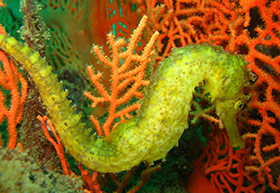

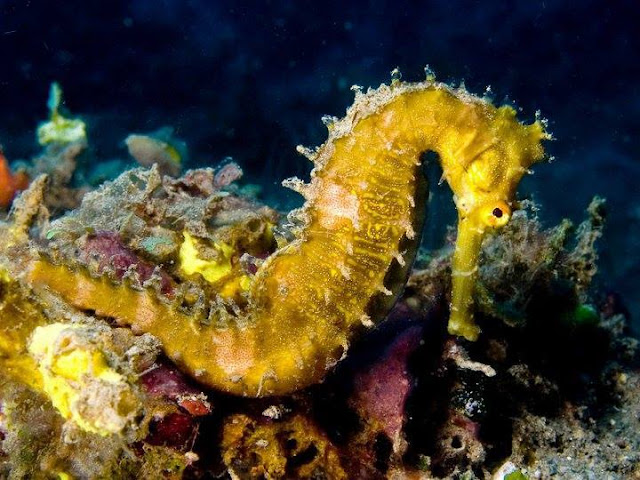
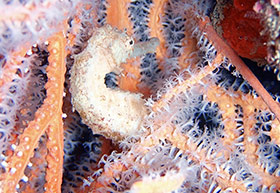
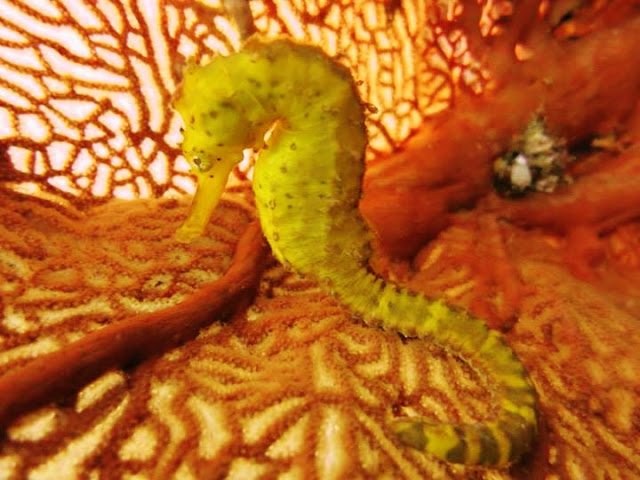
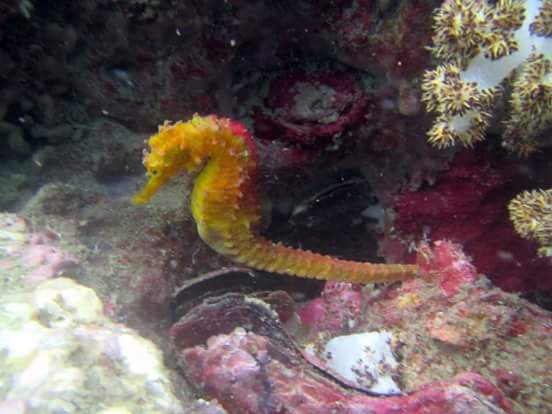
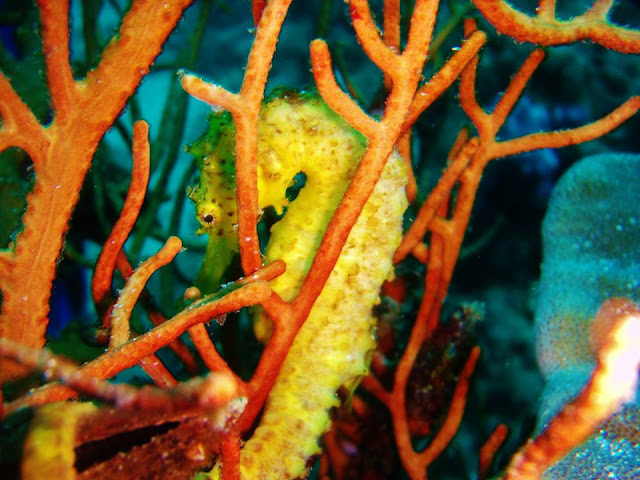
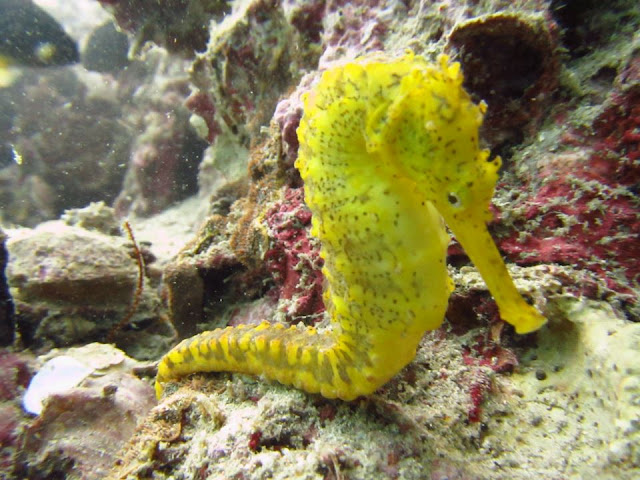
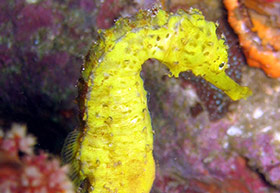
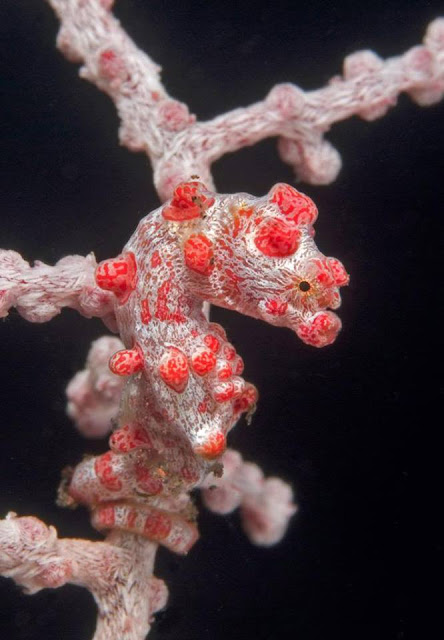

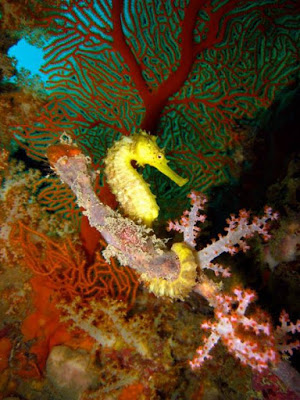

Load more comments